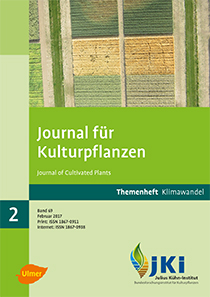Pest Risk Analysis in (Climate)Change: future oriented risk-assessment
Keywords:
Plant health, climate sensitive species, modeling, risk analyses, climate changeAbstract
Pest risk analyses are the fundament for preventive trade and production regulations against the introduction of pest species or for eradication measures of introduced pests. The climatic conditions of the threatened areas are of central importance for the risk analysis. So far, climatic analyses are predicated on the reference climatology period 1961–1990. Bursaphelenchus xylophilus, Ceratitis capitata and Xanthomonas fragariae document exemplarily the extensive changes of risks from new and quarantine relevant pest species. The inclusion of climate change into pest risk analyses is crucial for the evaluation of long-term risks. These analyses depend on fundamental key data of the biology, distribution and interaction of climatic high-sensitive organisms. Knowledge gaps have to be closed and be complemented by an early selective monitoring to detect introductions and a shift of the invaded area due to climatic changes.
DOI: 10.1399/JfK.2017.02.08, https://doi.org/10.1399/JfK.2017.02.08








